| Four characteristic beautiful proofs of home handicrafts. Common tin packages for jam, sweet biscuits, and other products transformed into real working magic lanterns by a skilful do-it-yourselfer. | |
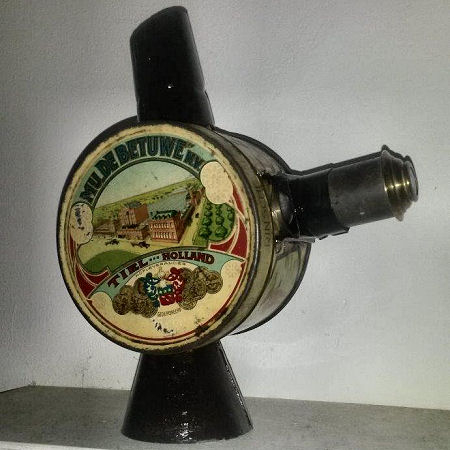 |
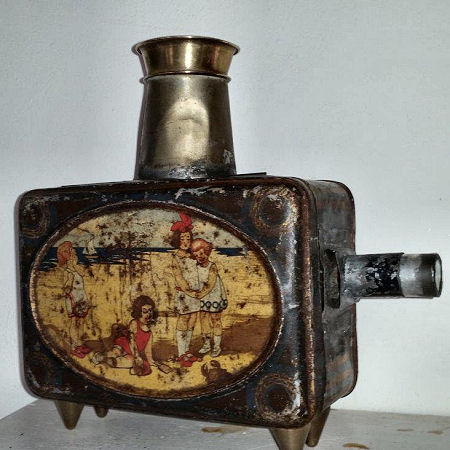 |
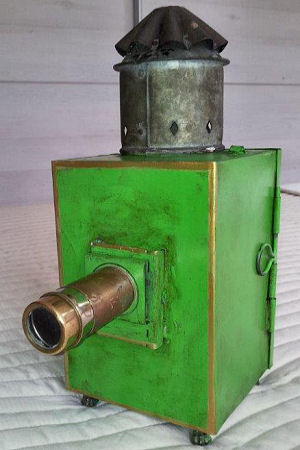 |
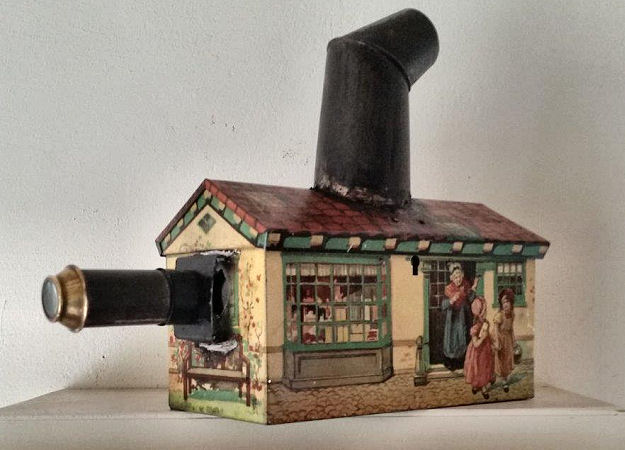 |
|
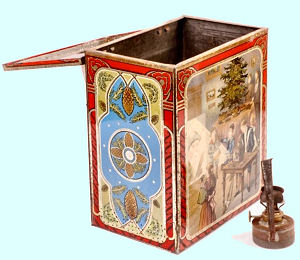 |
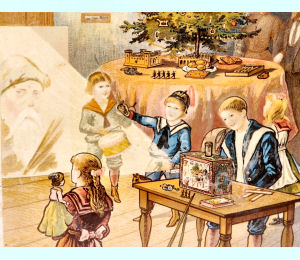 |
German magic lantern in a biscuit tin
this time made by an industrial manufacturer. Very rich decorated biscuit tin that can be used, after eating the last biscuit, as a real magic lantern! The manual is printed at the front. Even the small oil lamp was provided. |
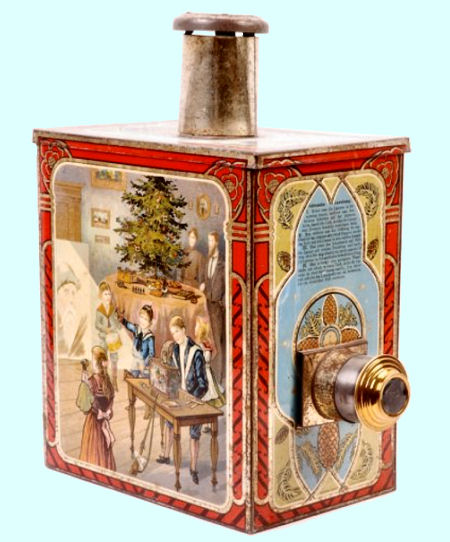 |
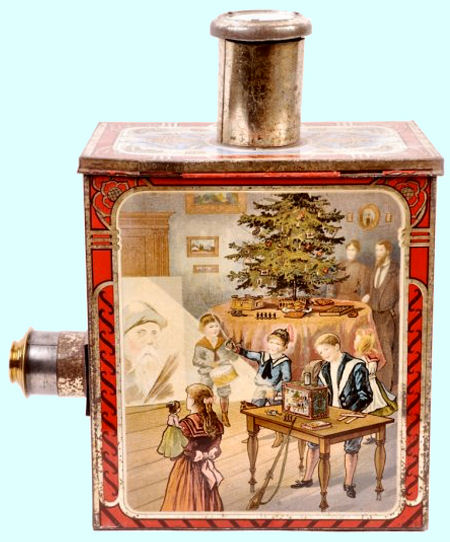 |
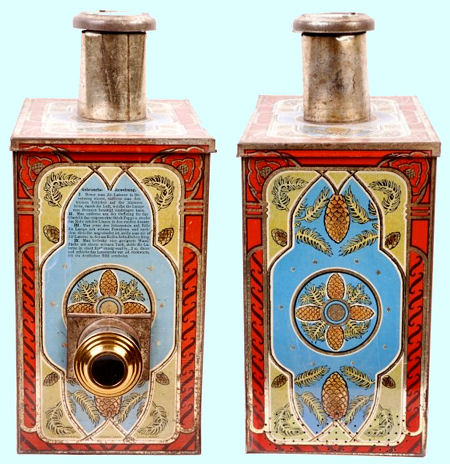 |
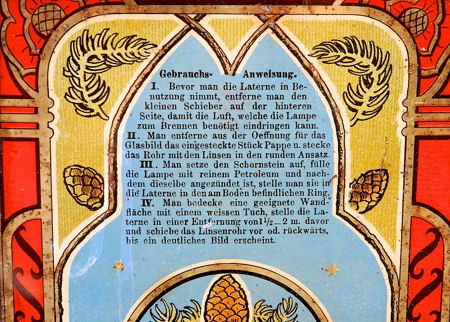 Manual: Before using the magic lantern you have to remove the small slider at the back for circulation of the air. Remove the cardboard part from the gap for the slide and insert the tube with lens. Put on the chimney, fill the lamp with oil and put it at the bottom in the ring after lighting. |
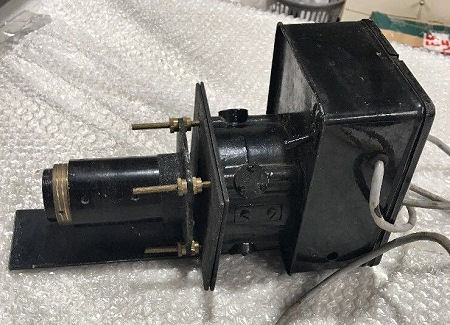 At first sight an industrial made magic lantern but when we open the back we see that it is made from a tin box that contained highly inflammable lighter fuel in the past. Approx total depth 27 cm, height 15 cm, width 13 cm. |
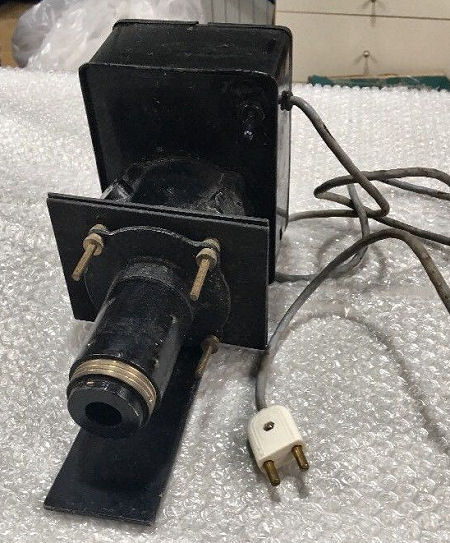 |
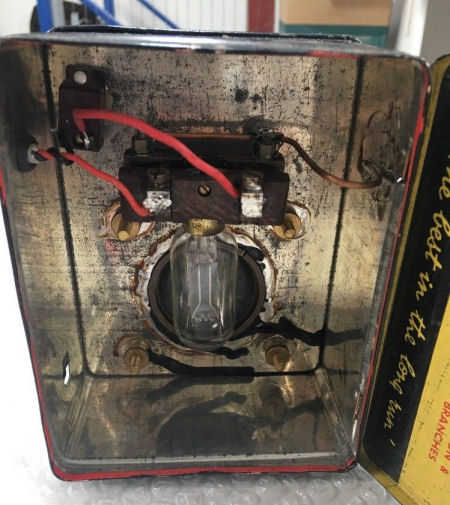 |
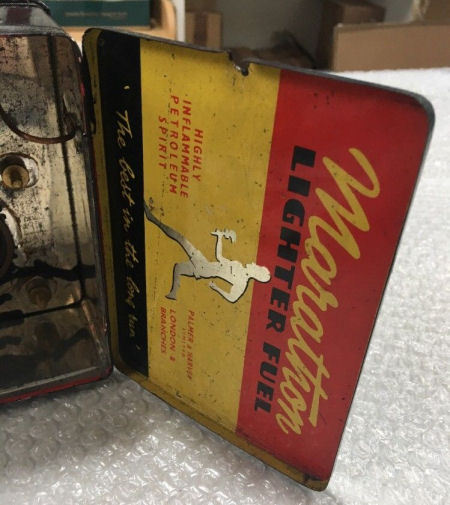 |
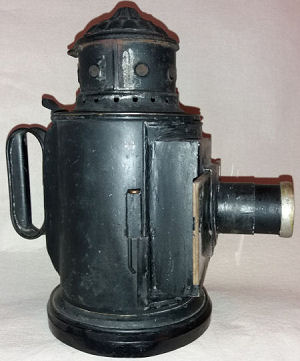 |
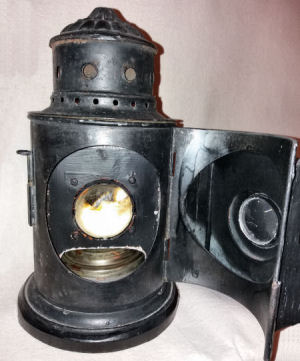 |
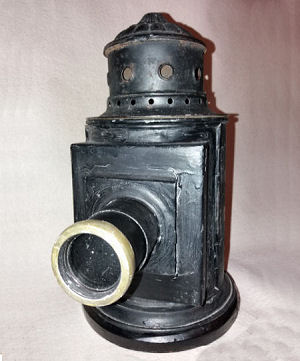 |
|
It's true that this magic lantern is not made from a
biscuit tin or other package, but it certainly is a proof of home
handicrafts because a handyman converted an old railway lantern to this
magic lantern. |
||
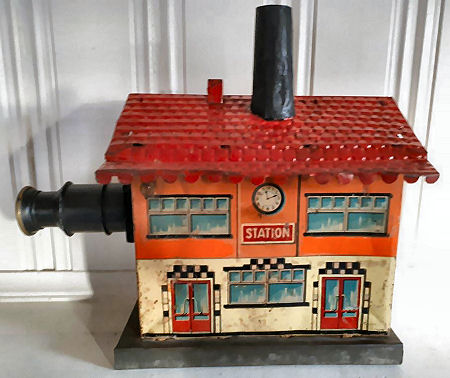 Tin toy station converted into a magic lantern. Originating from Germany. |
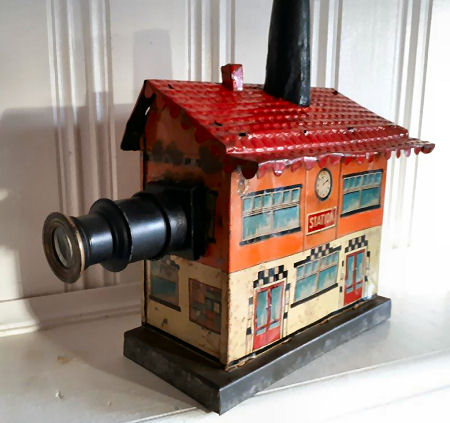 |
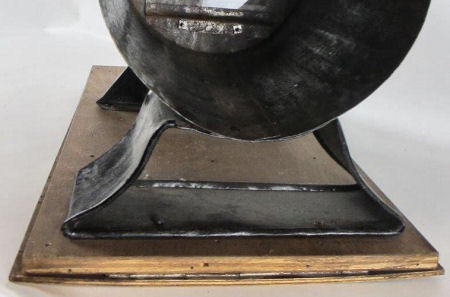 |
At first glance, it doesn't look like a lantern that
belongs in the category of biscuit tin magic lanterns, but the sloppy and
simple way of building it reveals that the lantern was made by a handy
do-it-yourselfer and not by a professional craftsman. The base board can be adjusted in height by means of a 6mm bolt on the front. The length of the lantern is 50 cm, the height 32 cm. It looks like the maker has amused his family members with it quite a few times. |
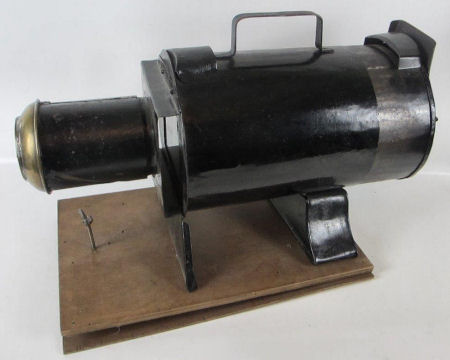 |
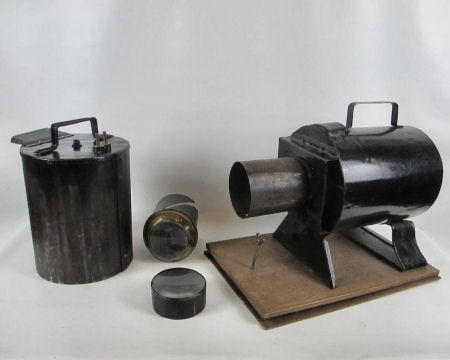 |
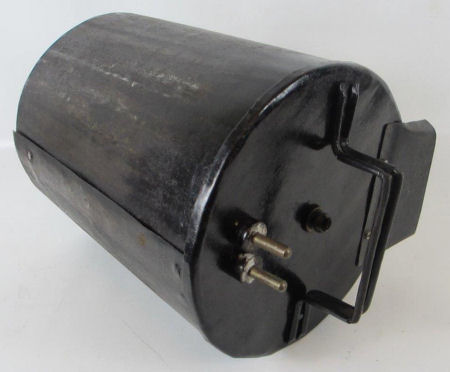 |
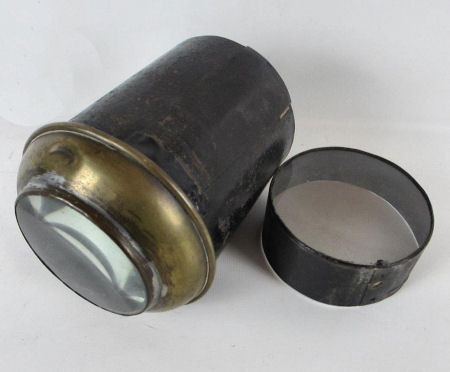 |
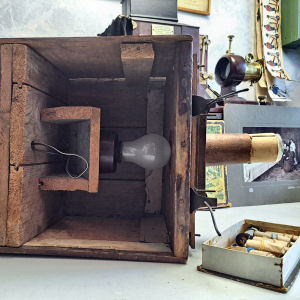 |
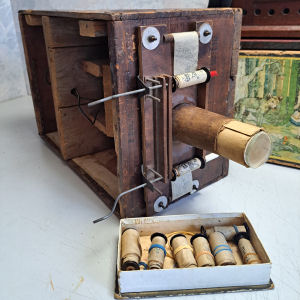 |
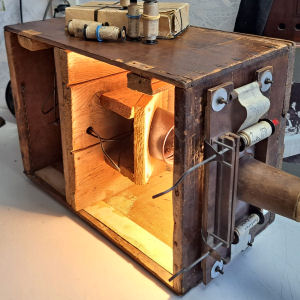 |
| This magic lantern was made about 70 years ago by a father for his son who was about 10 years old at the time. The self-drawn 'movies' were rolled on a Kodak photo film reel. | ||
Biscuit tin magic lanterns made by the webmaster: From the moment I saw the biscuit tin magic lanterns above I knew right away that I also wanted to make something like that myself. |
|
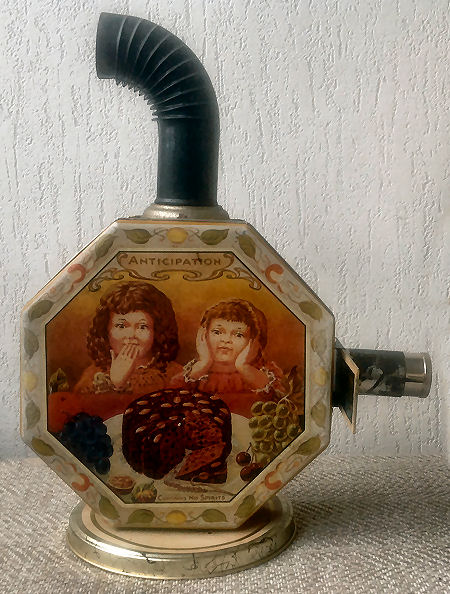 |
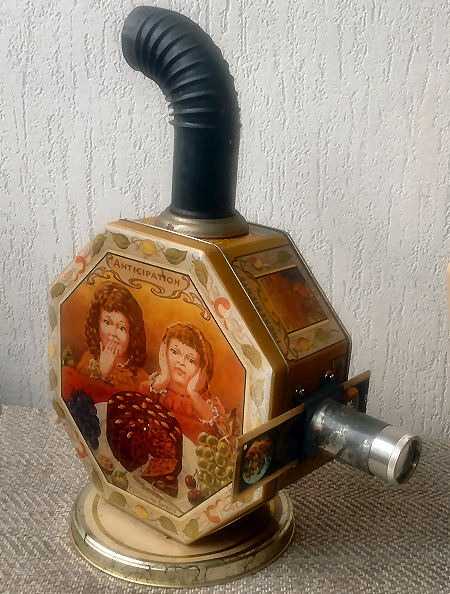 |
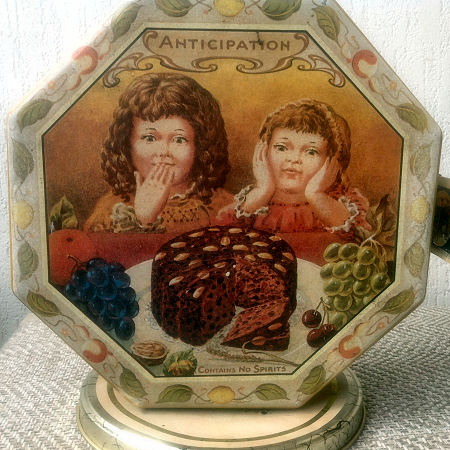 |
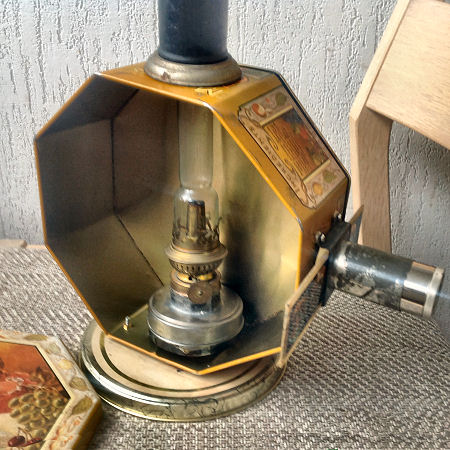 |
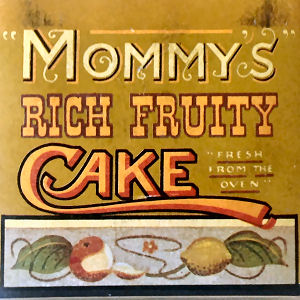 |
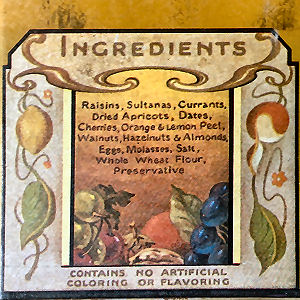 |
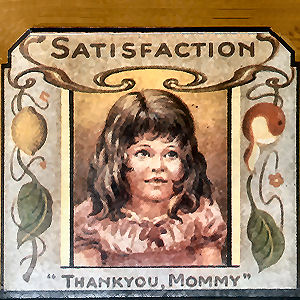 |
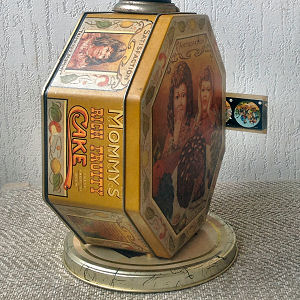 |
In a charity shop I found a biscuit tin that seemed
quite to been made for the job: the right size, the easy to process
octagonal shape and, last but not least ...... the nostalgic pictures
on the cover and edge. The children who were pictured on the cover
looked enchanted at ' Mommy's Rich Fruity Cake ', but their facial
expression was the same as that I knew of children who enjoyed a nice
magic lantern performance. The lid of another old cookie jar turned out
to be particularly suitable as foot and some screws and loose spare
parts made the whole thing complete. |
|
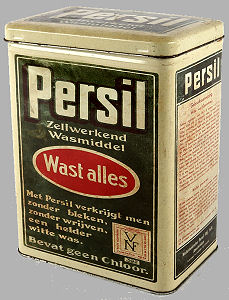 Persil-can magic lantern. An old, nostalgic can in which the Dutch detergent Persil was sold, was transformed by the webmaster into a funny magic lantern. The dimensions of the can are approximately 20 x 15 x 10 cm. The dimensions of the magic lantern are approx. 34 x 23.5 x 10 cm. The objective, the condenser and the flap door on the side wall come from an old abandoned magic lantern, the chimney is made of plastic pipeline parts that are sprayed matt black. The four beautiful legs came from the junk box. |
|
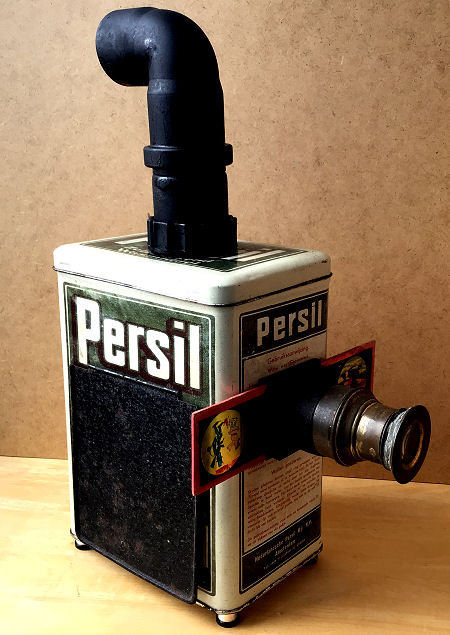 |
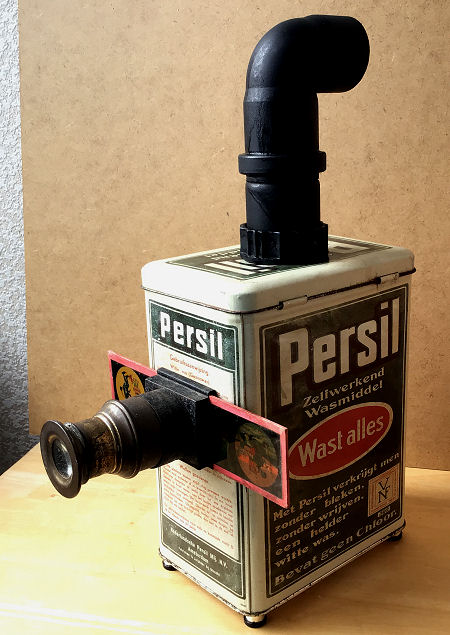 |
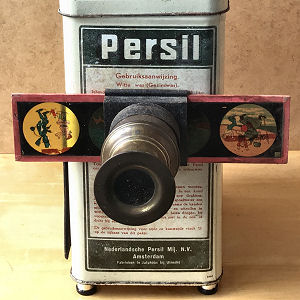 |
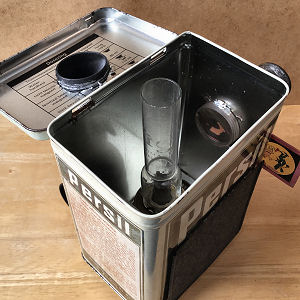 |
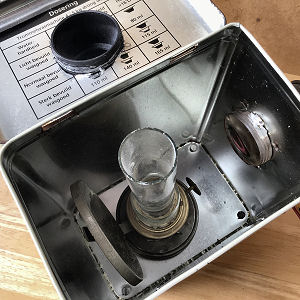 |
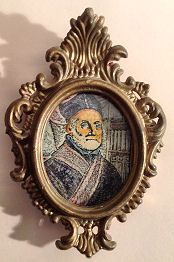 One of the inventors of the magic lantern was the German Jesuits priest and scientist, Athanasius Kircher. There is a stubborn story about this learned father that most probably is not based on truth, but hey, it's a nice story: The father had come up with a practical application for the device. When he paid a visit to the apostate believers in the evening, he kept a simple magic lantern hidden under his frock. If talking no longer helped, he went on to take tougher measures. On the glass of his lantern he had painted a realistic image of death that he projected from the outside onto the parchment windows of their simple farmhouses. That was successful! The next Sunday morning his church was packed out again. True or false, when I saw a simple knickknack lantern standing in a thrift shop, I immediately thought of this German priest and got the idea to tinker this lantern into a magic lantern that might have looked like the lantern that Kircher used. |
|
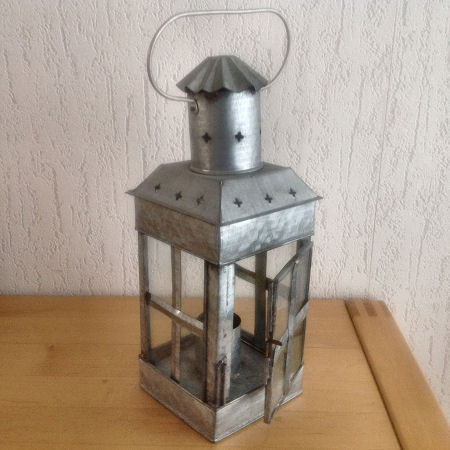 |
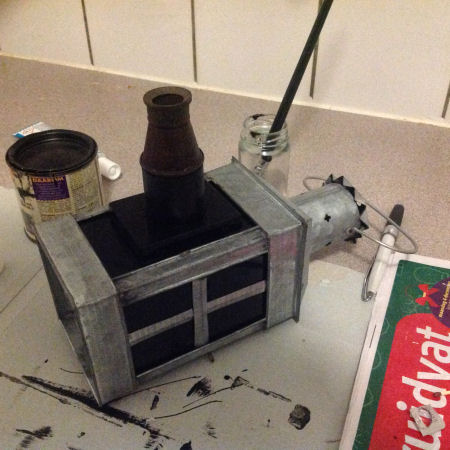 |
| The glass panes were painted black. The glass at the front was replaced by a wooden board with a simple wooden slide holder and lens tube. A small old lens came out of the junk box that fitted perfectly. A candle from the Christmas box provided the lighting. | |
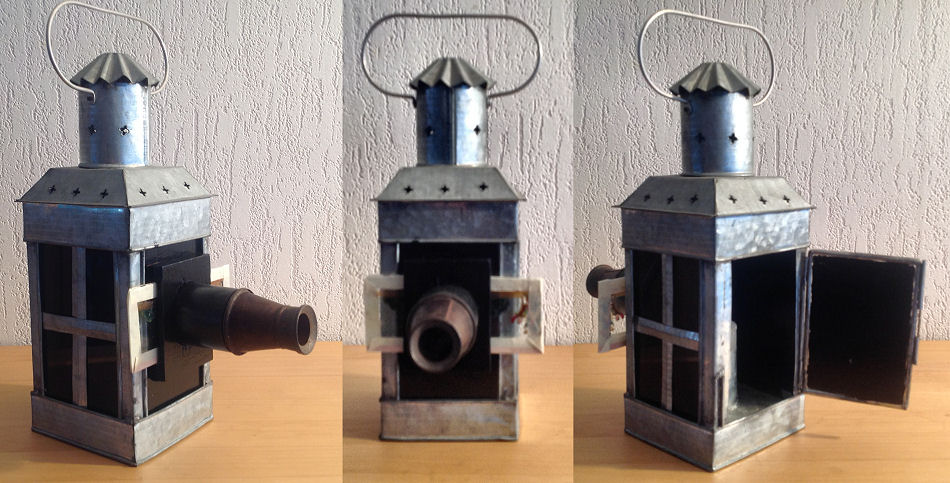 |
|
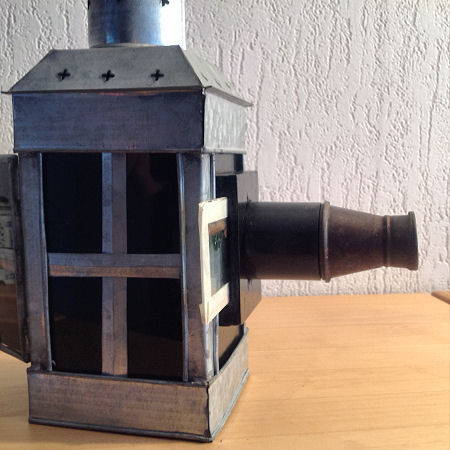 |
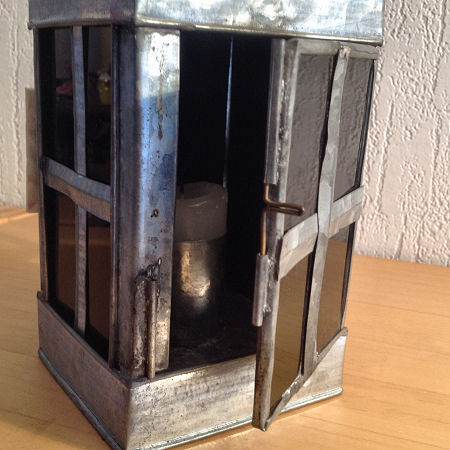 |
 |
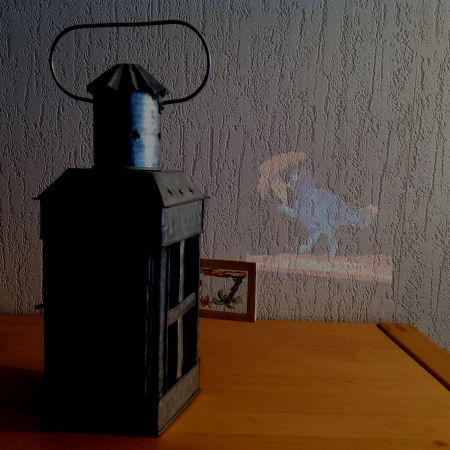 |
|
More handicrafts..... |
|
| |
©1997-2025 'de Luikerwaal' All rights reserved. Last update: 12-03-2025. |